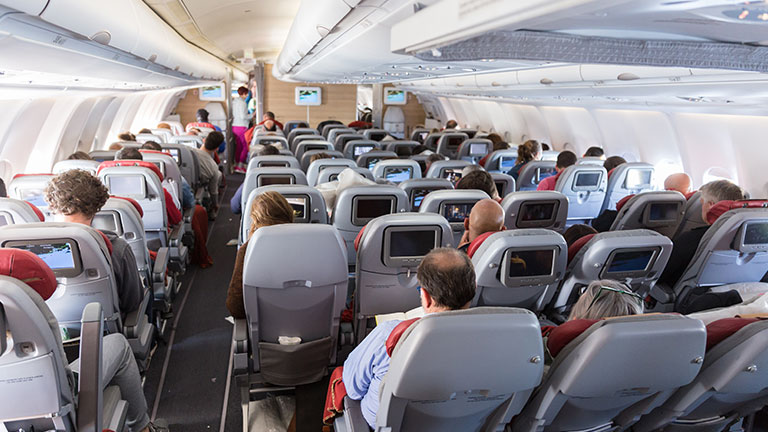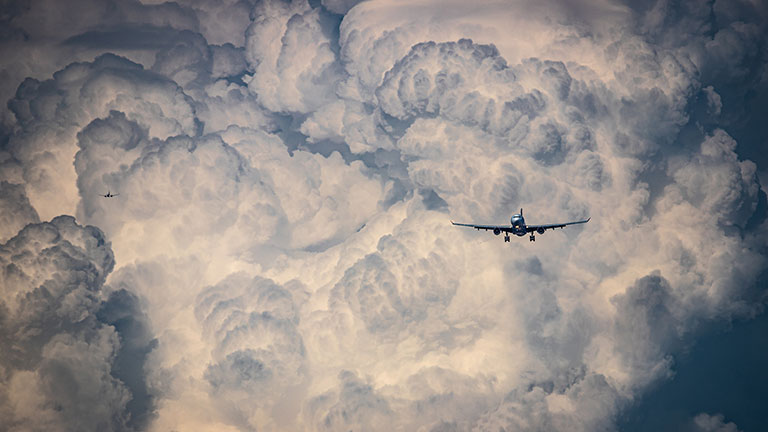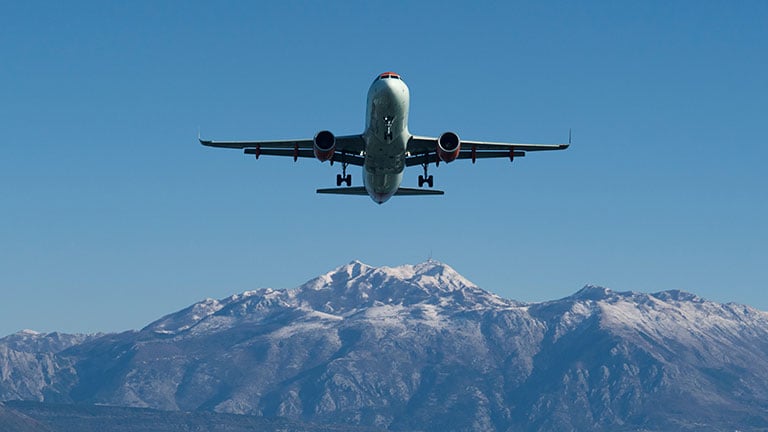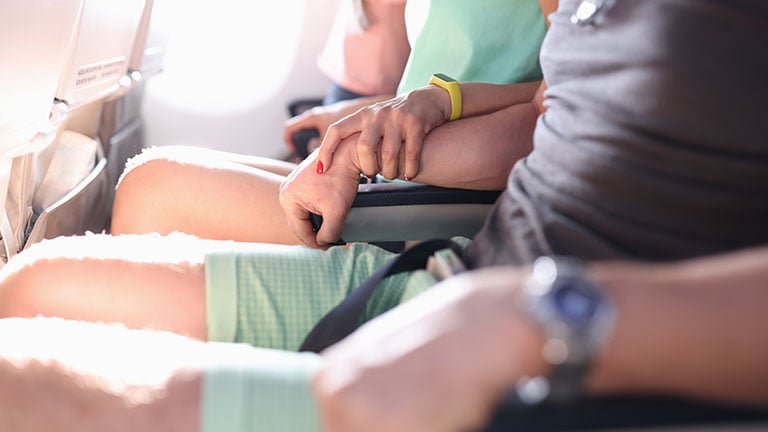
For nervous flyers, sometimes knowledge really is power—and it can be a helpful tool for managing fear. Understanding what causes turbulence and when it's most likely to occur can help calm the mind, even if the skies are anything but calm.

What is turbulence?
The US National Weather Service defines turbulence as “irregular motion of an aircraft in flight, especially when characterized by rapid up-and-down motion, caused by a rapid variation of atmospheric wind velocities.”
Turbulence often starts as a sensation called chop, similar to riding on a bumpy road. From there, it can progress through four increasing levels: light, moderate, severe, and extreme, each involving more pronounced changes in the aircraft's altitude and stability.

What causes turbulence
Turbulence is caused by a few factors. Knowing the basics can help you understand why some flights are more likely to experience it than others. Here are two of the most common types:
- Mechanical turbulence occurs when airflow is disrupted by obstacles on the ground, such as buildings or mountains. This is especially common around mountain ranges. If you’re flying on the downwind side of a mountain, you may encounter “mountain waves” or “rotors”—rotating pockets of air that can cause the aircraft to rise and fall.
- Thermal turbulence happens when the sun heats the Earth’s surface Warm air rises from the ground and mixes with the cooler air above, creating vertical air currents. As your plane flies through areas with varying ground temperatures, it moves in and out of these rising and falling air patterns.

Forecasting turbulence on your flight
If you want to know if the weather conditions make turbulence a possibility for your flight, there are websites and apps you can check in the days leading up to your trip. Here are two popular resources:
- Turbli offers a free interactive turbulence map and flight-specific graphs. These visuals show you expected turbulence levels, where and when they may occur along your route, and even forecast nearby thunderstorms.
- Turbulence Forecast provides a free US map view that highlights reported turbulence by severity level and altitude. For just a few dollars (or with a subscription), you can get an AI-generated turbulence forecast tailored to your specific flight path. These reports offer best-case and worst-case scenarios, forecasts across various cruise altitudes, and a multi-paragraph AI summary interpreting the data.

Tips for avoiding turbulence
While turbulence can’t always be avoided, a few smart choices can make your flight feel noticeably smoother:
- Fly early in the morning, when the air is generally cooler, to reduce the likelihood of thermal turbulence.
- Choose a seat over the wing, rather than in the rear of the plane. This placement often makes changes in pitch feel less pronounced and can help lessen the sensation of bumps.
- Fly on larger aircraft to mitigate the sensation of turbulence, as bigger planes (such as wide-body jets) are more stable and less affected by rough air than smaller regional jets.
- Wear noise-canceling headphones or listen to calming music to help reduce anxiety and remain calm during bumpy moments.
- Choose nonstop flights when possible to minimize exposure to turbulence since takeoffs and landings involve passing through more turbulent air layers.

How to stay safe when turbulence unexpectedly hits
The best way to avoid injury during turbulence is to stay seated with your seatbelt fastened, as advised by the Federal Aviation Administration.
No matter where you sit or how bumpy the flight gets, know that your plane has been engineered to withstand turbulence—and pilots and crew are trained to handle it safely.
With all the tools available to nervous flyers, finding peace of mind—even in bumpy skies—is within reach. Understanding when turbulence is expected, why it happens, and how long it might last can help your time in the air feel more manageable.

